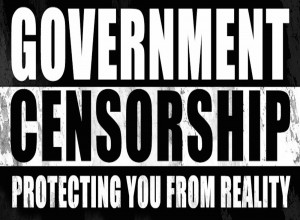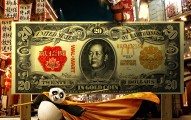In the past we have written about, and shown the charts of what has happened in the stock markets since 2008 after the Fed began their policies of near zero interest rates, and massive quantitative easing. In fact, it was a case of simple analysis to realize that the rise and fall of the equity markets over the past seven years have been intrinsically tied to infusions of new money printing, where stocks always declined when the spigots were turned off by the central bank.
However, massive imbalances within a money supply will naturally create bubbles in one or more equity markets, where even the worst stocks will be over-valued, and where relative ‘shacks’ in a market such as housing will sell for multiples above their real values.
The reasons behind this are simple… to protect against hyperinflation during monetary expansion the central bank must ensure that the velocity of money is kept limited to the paper markets and not allowed to trickle down into the general economy where a saturation of cheap money would cause prices to rise too fast on material goods, and destroy the meaning of value for many of the items consumers purchase.
Which leads us to now to the day of reckoning, or what happens in every instance of monetary expansion. Over the past three weeks, equity markets around the world have been accelerating downward based on a number of factors. First, the ability of new debt to increase GDP has now gone beyond the point of diminishing returns and would require an ever expanding rate of money printing just to squeeze out a single dollar of nominal growth. Thus beginning in China, then traversing over into Europe and the U.S. during a daily market cycle, market declines and bad economic data are showing the cracks in the global financial system which are in part the same fundamental flaws that led to the 2008 crash.
Liquidity. Both in the requirements of current assets to hold their inflated levels and in the fact that there are few assets left for central bank debt to purchase and keep the artificial growth going.
Secondly, the stock markets are run by computer algorithms which now do 75-80% of all trades worldwide in equities, and are the catalyst for nearly every directional swing in the markets. Thus when one region of the global system moves up or down, the other regional markets almost always follow suit. And with China now beyond bear territory in their markets, and unable to stem the flow of their ‘blood in the streets’, it leaves Europe, the U.S., and the rest of Asia with little choice but to create their own collapse scenario until intervention is imposed.
And that intervention is well under way. China has limited short selling and even the divesting of stocks by large shareholders, and the U.S. circuit breakers today have halted selling and buying for numerous stocks several times in just the first few hours while the PPT works to use this slowdown in trading to purchase key sectors and etf’s to pump the markets back up.
But either way, and as much as the talking heads try to spin the story to that of being a ‘natural correction’, the truth of the matter is the entire foundation of the markets are built on sinking sand, and are finding that there is no solid economy to backstop the paper markets which have been relatively immune to this for the past four years. So while everyone loves to create fictitious exaggerations of how this is the ‘big one’, the reality is this is only the beginning, and will soon lead to the unveiling of how rotten the entire core of the global economy is, with the Fed and other central banks forced to go where no policy makers have gone before.
Kenneth Schortgen Jr is a writer for Secretsofthefed.com, Examiner.com, Roguemoney.net, and To the Death Media, and hosts the popular web blog, The Daily Economist. Ken can also be heard Wednesday afternoons giving an weekly economic report on the Angel Clark radio show.

